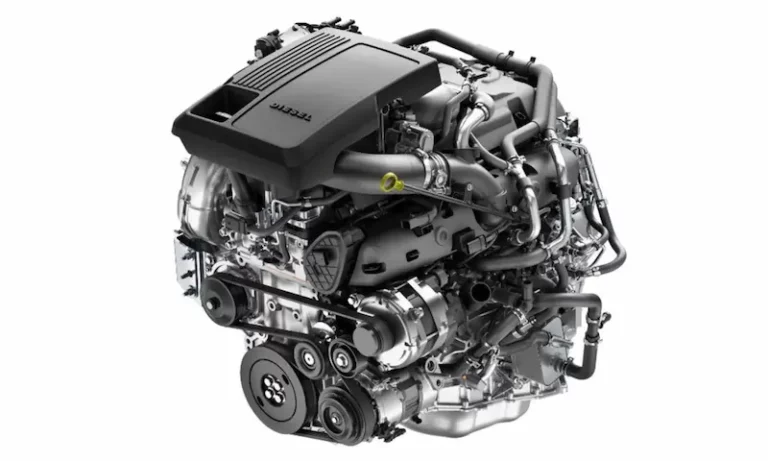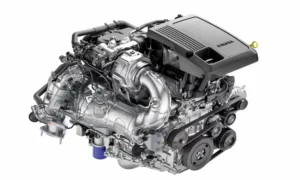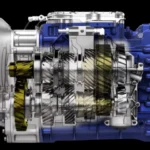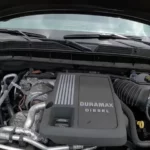Encountering a “Water in Fuel” message on your Duramax diesel engine can be unsettling. It’s an alert that indicates water has been detected in the fuel system, which can lead to several issues if not addressed promptly.
Understanding the implications of this message is crucial for maintaining the health of your engine. Water in the diesel fuel can cause corrosion and damage to the fuel injection system, so it’s important to take immediate action. Addressing the problem as soon as the message appears helps prevent costly repairs and keeps your vehicle running smoothly.
Understanding the ‘Water in Fuel’ Message
When you own a Duramax diesel engine, encountering a ‘Water in Fuel’ message can be a cause for concern. This warning serves as an alert that water has been detected in your fuel system, which, if not addressed, can lead to engine damage.
Typically, your vehicle’s fuel system is designed with a sensor that detects water in the fuel filter housing. This sensor is often a type of reed switch that activates a circuit within the fuel filter when water is present. Water has the potential to corrode engine parts and decrease efficiency, hence the system triggers an alert.
Here’s a quick overview of what this message means:
- Indicator: A light on your dashboard or a text message signaling the detection of water.
- Sensor: A component that uses a reed switch mechanism to identify water presence.
- Action: The signal prompts you to take action to prevent damage to your vehicle.
Here is what you can do if you see the message:
- Do not ignore the warning. Prompt action is important.
- Inspect and Drain. Check the fuel filter housing and drain any water accumulated at the bottom.
- Sensor Check. Ensure the sensor itself is functioning properly – a malfunction can send false warnings.
In some instances, despite clearing the water, the message might persist. This could be due to a sensor fault or an issue with the associated electrical circuit. If you continue to receive the ‘Water in Fuel’ message after taking corrective measures, it may be necessary to consult a professional.
The Role of the Fuel Filter in Water Detection
Your Duramax’s ability to detect and remove water from its fuel system is crucial for vehicle health. Let’s explore how the fuel filter plays a part in this process.
Fuel Filter Basics
The fuel filter is critical in protecting your engine by trapping contaminants before they reach sensitive engine parts. Typically, an ACDelco fuel filter or a compatible brand is used, promising reliable performance. The filter also houses a water separator to combat water contamination.
Water Separator Function
A water separator is built into the fuel filter housing and works to actively separate water from the fuel. It uses a float mechanism to detect water presence; when the float rises, it signals that there’s water to be dealt with.
Maintenance and Replacement
It’s recommended to replace your filter periodically to prevent clogging and potential engine damage. Checking with your dealer for the specific intervals and parts like an ACDelco fuel filter is a proactive maintenance step.
Draining the Water from Fuel Filter
You should periodically drain the water from your fuel filter. This involves opening a drain valve or plug at the bottom of the filter housing to let the water out. If you notice consistent water accumulation, consider using a fuel additive to help remove moisture.
Identifying a Clogged or Dirty Fuel Filter
Symptoms of a clogged or dirty fuel filter include a decrease in power, trouble starting, and poor fuel economy. If you encounter these problems, it may be time to replace the filter or address contaminated fuel.
Duramax Specific Water in Fuel Issues
Understanding the nuances of Duramax engines and their fuel system can save you a lot of trouble. Especially, you should be vigilant about the Water in Fuel (WIF) messages that may arise, indicating that water has been detected in your diesel fuel—a situation that can lead to damage if not addressed promptly.
The LLY Duramax and Water in Fuel
Your LLY Duramax is more than a powerful engine; it’s a complex assembly that, like all Duramax variants, may occasionally display a water in fuel (WIF) warning message. This alert is key to preventing water-related damage to your engine. The LLY, manufactured from 2004 to 2005, uses a fuel system that is particularly vulnerable to water infiltration. If you encounter a WIF alert, it’s important to take immediate action, as water in the diesel can cause severe issues like corrosion and decreased lubrication.
Common Problems in Duramax Fuel System
The fuel system of your Duramax can face a variety of issues. Chaffed wires and a faulty WIF sensor are among the common culprits that may result in false alarms. Regular maintenance is a must, and this includes checking the integrity of the sensor’s housing and associated wiring. If you’re dealing with persistent water in fuel messages, it pays to inspect these components for damage or wear, which might trigger incorrect alerts.
Dealing with Duramax WIF Sensor Alerts
When your Diesel Silverado displays a water in fuel alert, it’s essential to act swiftly. To address a WIF sensor alert effectively:
- Turn off the engine.
- Locate the WIF sensor, usually found on the fuel filter housing.
- Drain the collected water from the housing until diesel fuel starts to flow.
It’s a straightforward process, but you must perform it as soon as you receive a warning message to prevent potential damage. Regularly check for any signs of wear or damage to the wiring near the WIF sensor, as a chaffed wire may sometimes cause false warnings. Also, after draining the water, make sure there’s no continuous leak, which could indicate a deeper issue within the fuel system of your Duramax.
Steps to Clear the Water in Fuel Message
Facing a “water in fuel” message can be a bit troubling, but with the right approach, you can resolve this common Duramax diesel engine issue quickly. Here’s how you can take care of it effectively.
Draining Water from the Separator
When your Duramax diesel displays a water in fuel message, the first step is to drain the water from the fuel filter water separator. This component is specifically designed to capture water before it enters the engine. To do this:
- Locate the water separator near the fuel filter.
- Place a container underneath to catch the water.
- Open the drain valve and let the water and fuel mixture flow out until you see pure diesel.
Once you’ve drained the water, close the valve and dispose of the waste properly. For visual steps, you might find this forum discussion helpful.
Resetting the WIF Sensor
After draining the separator, you’ll want to reset the WIF sensor, as it may continue to trigger the warning message if not reset. Here’s what to do:
- Turn the ignition on and off a few times without starting the engine. This can sometimes reset the sensor.
- If the message persists, consider replacing the sensor as it might be faulty, especially if no water is found in the drained fuel.
What to Do if the Message Persists
If after these steps the warning message doesn’t clear, it’s possible there’s still water in your fuel system or there might be an issue with the sensor circuit. At this point:
- Re-examine the fuel you’ve drained for any signs of water.
- If water is present, it’s advisable to drain the entire tank and refill with fresh fuel.
- Should no water be evident and the warning continues, this might indicate a deeper sensor issue.
At this stage, it’s prudent to contact your dealer or a trusted mechanic for a thorough diagnosis. Persistent codes and messages often require professional intervention.















